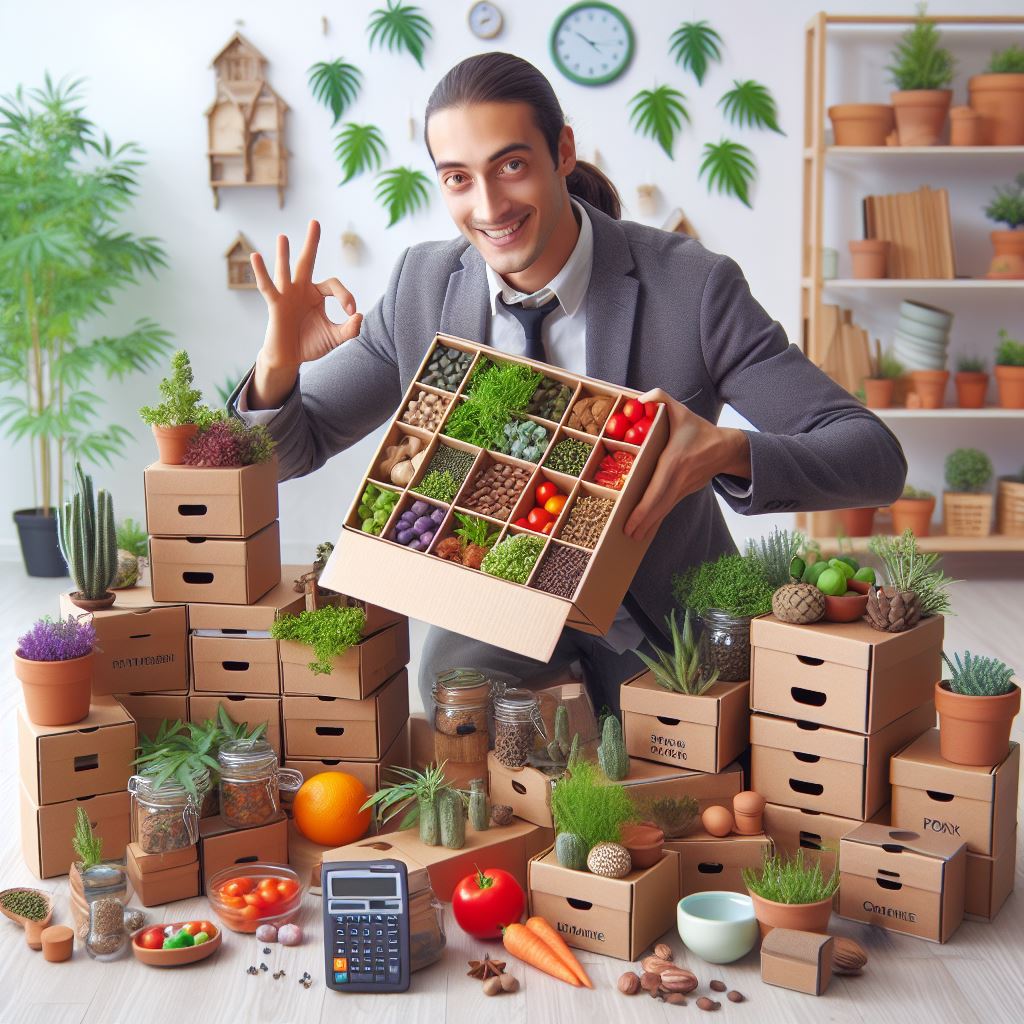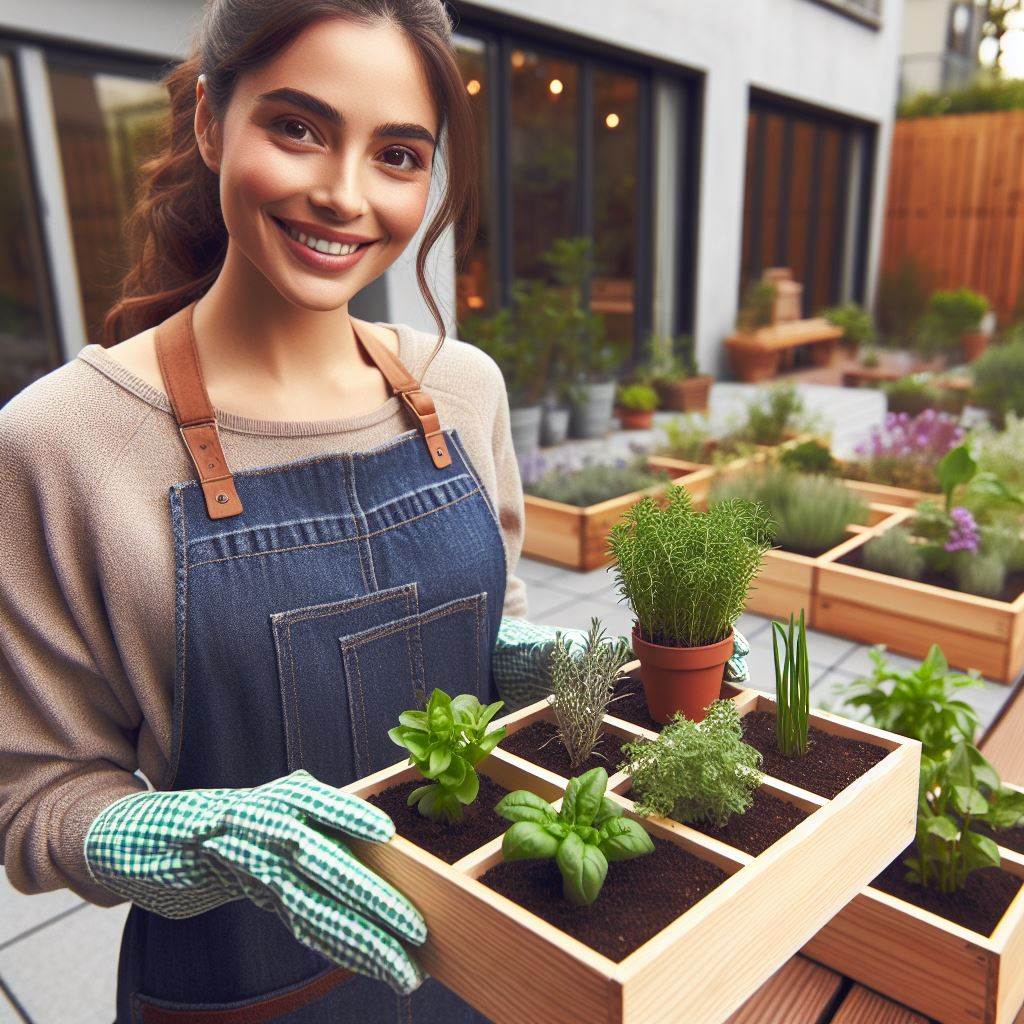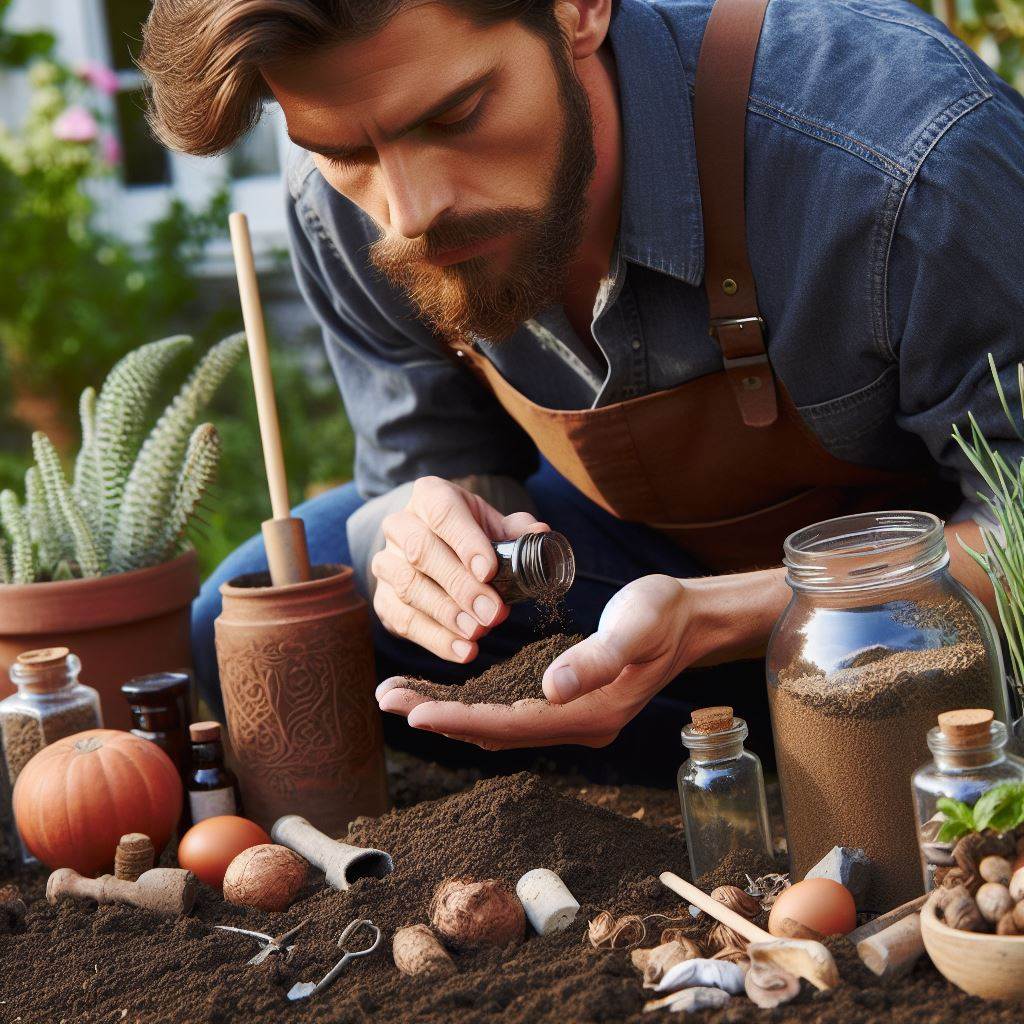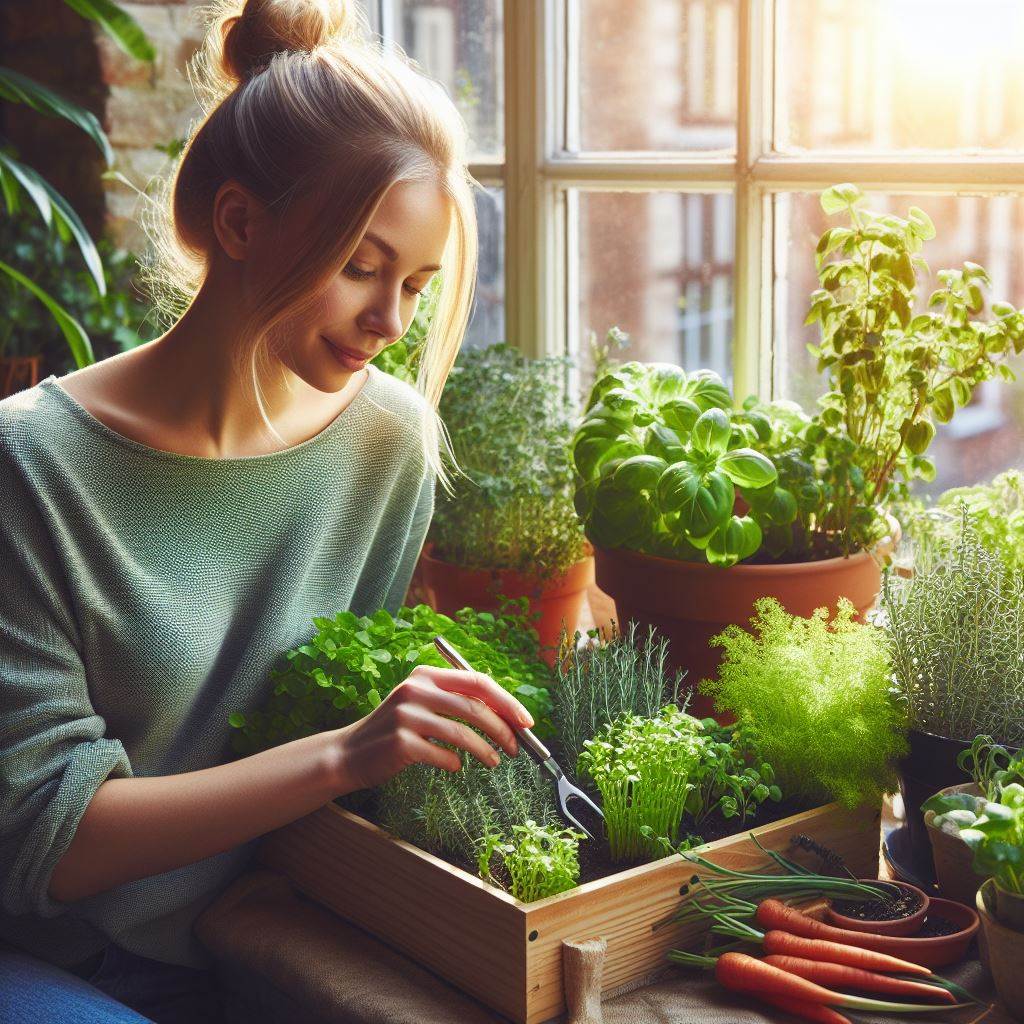Introduction
Importance of herb gardening for beginners
Herb gardening is a valuable skill for beginners to develop, offering numerous advantages and benefits.
It allows individuals to grow their own herbs, leading to a more sustainable and self-sufficient lifestyle.
Overview of the topic: Herb Boxes for Beginners: Small Space Edition
In this section, we will explore the concept of herb boxes specifically designed for beginners with limited space.
We will discuss why herb boxes are suitable for small spaces and the various benefits of growing herbs in containers.
Why herb boxes are suitable for small spaces
Herb boxes are ideal for small spaces because they provide a compact and organized solution for growing herbs.
With their vertical design, they maximize the use of limited space, making it possible for anyone to enjoy herb gardening, regardless of their living situation.
Benefits of growing herbs in containers
Growing herbs in containers offers several advantages.
Containers can be placed in convenient locations, such as balconies, windowsills, or countertops, providing easy access for maintenance and harvesting.
Additionally, containers allow for proper soil control, ensuring optimal plant growth and preventing weed intrusion.
By utilizing herb boxes and containers, beginners can overcome space limitations and still enjoy the benefits of herb gardening.
In the following sections, we will delve deeper into the steps and considerations involved in setting up herb boxes for small spaces and maximizing their potential for a thriving herb garden.
Stay tuned for expert advice and practical tips!
Selecting the right herbs
Easy-to-grow herbs for beginners
If you’re a beginner looking to start your own herb garden, it’s important to choose herbs that are easy to grow.
These herbs require minimal care and maintenance, making them perfect for small space herb boxes.
Basil
First on the list is basil – a highly popular herb with a variety of uses.
Transform Your Agribusiness
Unlock your farm's potential with expert advice tailored to your needs. Get actionable steps that drive real results.
Get StartedIt not only adds a fresh and vibrant flavor to your dishes but also complements various cuisines such as Italian, Thai, and Mediterranean.
Thyme
Next up is thyme, a versatile herb known for its aromatic and earthy flavor.
It pairs well with a wide range of dishes, including meats, soups, stews, and vegetables.
Thyme also has medicinal properties and can be used to soothe sore throats and coughs.
Rosemary
Lastly, we have rosemary, a fragrant and robust herb that adds a distinct flavor to your dishes.
It is particularly popular in Mediterranean cuisine and works well with roasted meats, vegetables, and bread.
Rosemary can also be used in infused oils, teas, and even bath products.
Consideration of personal preferences and usage
When selecting herbs for your small space herb box, it’s essential to consider personal preferences and usage.
Think about the herbs you enjoy using the most in your cooking or the ones that suit your taste buds.
If you find yourself frequently reaching for basil or thyme, it’s a good indication that you should include them in your herb box.
In addition to personal preferences, consider how you plan to use the herbs.
Are you mainly looking to enhance your culinary creations? Or are you interested in herbs with medicinal properties?
If you’re primarily focused on cooking, herbs like basil, thyme, and rosemary are excellent choices.
However, if you’re interested in herbal remedies, consider herbs like chamomile for relaxation, lavender for stress relief, or mint for digestive issues.
By taking into account your personal preferences and usage, you can create a herb box tailored to your specific needs.
This will ensure that you have a successful and enjoyable herb gardening experience.
Remember, the key to a thriving herb box is selecting herbs that are easy to grow and suit your individual taste and purpose.
Read: Apartment Herb Gardening: Freshness on Hand
Choosing the appropriate container
Evaluating available space
When evaluating available space, it’s essential to consider the dimensions and accessibility of the area where you plan to grow your herb boxes.
Windowsills are a popular choice due to their proximity to sunlight, but balconies or even small patches of ground can also be utilized.
Container options for small spaces
Window boxes are an excellent solution for small spaces.
They can be easily mounted on windows or railings, taking advantage of vertical space.
Hanging baskets are another viable option for small spaces.
By suspending them from hooks or ceiling mounts, you can save valuable floor space.
Showcase Your Farming Business
Publish your professional farming services profile on our blog for a one-time fee of $200 and reach a dedicated audience of farmers and agribusiness owners.
Publish Your ProfileVertical herb gardens are a fantastic innovation that maximizes space utilization.
These gardens can be created by attaching containers to walls or fences.
Factors to consider when selecting a container
When selecting a container for your herb boxes, there are a few important factors to consider.
Firstly, ensure that the container has adequate drainage capabilities.
Proper drainage prevents waterlogging and promotes healthy plant growth.
Additionally, consider the size and depth requirements of the herbs you plan to grow.
Some plants have extensive root systems that require deeper containers.
Lastly, consider the material durability and suitability for the container.
Plastic or metal containers are weather-resistant and can withstand outdoor conditions.
By carefully evaluating your available space and considering these factors, you can choose the perfect container for your small-space herb garden.
Remember, a well-chosen container will provide the necessary environment for your herbs to flourish, no matter how limited your space may be.
With the right container in place, you can embark on an exciting journey of cultivating fresh herbs in your small urban oasis.
Read: Compact Herb Gardening: A Step-by-Step Guide

Essential supplies and materials
Potting soil
By having the right potting soil, you ensure that the herbs will thrive in their limited space.
The soil should be loose and well-draining, allowing water to flow freely through the roots.
Fertilizers or organic compost
Fertilizers or organic compost are important additions to the soil as they provide the necessary nutrients for the herbs to grow and flourish.
This will result in healthier plants with stronger flavors.
Herb seeds or seedlings
Deciding between herb seeds or seedlings depends on personal preference and time constraints.
Starting from seeds allows you to choose from a wider variety of herbs, but it requires patience as they need time to germinate and grow into plants.
Alternatively, purchasing seedlings provides a head start and saves time, especially if you’re eager to begin your herb garden.
They are already established, allowing you to enjoy fresh herbs sooner.
Tools and equipment needed
Once you have your supplies, it’s time to gather the necessary tools for your herb garden.
A trowel is essential for digging holes, transplanting seedlings, and ensuring proper soil coverage.
Don’t forget to protect your hands with gardening gloves. This will prevent blisters and keep your hands clean while working with the herbs.
Having a watering can or hose sprayer is crucial to ensure adequate hydration for your herb boxes.
Herbs typically require regular watering, especially during hot summer months.
When using a watering can, make sure to water the plants at their base to avoid wetting the foliage excessively.
This helps prevent disease and fungal issues.
If using a hose sprayer, adjust the nozzle to a gentle spray to prevent soil erosion in the boxes and ensure even distribution of water.
Therefore, gathering essential supplies and materials, such as potting soil, fertilizers, herb seeds or seedlings, and the necessary tools, is the first step in creating your herb boxes for small spaces.
By having everything prepared, you are setting yourself up for success and a bountiful herb harvest.
So grab your trowel, put on your gloves, and start building your own mini herb oasis!
Read: Urban Herb Farming: Tips for Your Window Ledge
Planting and Care Instructions
Preparing the Container for Planting
- Clean and sterilize the container to ensure a healthy environment for your herbs.
- Provide proper drainage by adding drainage holes at the bottom of the container.
Starting with Quality Soil and Fertilizer
Choose a high-quality potting mix enriched with organic matter for optimal herb growth.
Planting the Herbs
- Follow spacing recommendations to allow sufficient room for herb development.
- Plant the herbs at the ideal depth, ensuring the roots are covered but not buried too deeply.
Watering Schedule and Techniques
Develop a watering schedule based on the specific needs of your herbs to avoid under or overwatering.
Sunlight and Temperature Requirements
Place your herb box in an area that receives adequate sunlight and maintains the recommended temperature.
Regular Maintenance and Pruning
Regularly inspect your herbs for any signs of disease, remove dead leaves, and prune to promote bushier growth.
Pest Control and Prevention Measures
Implement pest control measures like using organic sprays or introducing beneficial insects to protect your herbs.
Read: Herb Gardening 101: Perfect for Tiny Yards
Harvesting and using your herbs
Knowing when to harvest
- Pay attention to the growth stage of your herbs.
- Harvest in the morning after the dew has dried but before the sun gets too hot.
- Look for signs of flowering or budding.
- Check if the plant has reached its optimal size for harvesting.
- Inspect the leaves for fullness and vibrant color.
Proper techniques for harvesting
- Use clean, sharp scissors or garden shears to cut the herbs.
- Trim the stems just above a leaf node to encourage new growth.
- Avoid removing more than one-third of the plant at a time.
- Remove any damaged or diseased parts while harvesting.
- Wash the herbs gently to remove any dirt or insects.
Utilizing fresh herbs in cooking
- Add fresh herbs towards the end of the cooking process to preserve their flavors.
- Chop the herbs finely to release their aroma and enhance the taste.
- Experiment with different combinations of herbs to create unique flavors.
- Use fresh herbs as garnishes to add visual appeal to your dishes.
- Infuse oils, vinegars, or butter with fresh herbs for a delicious homemade condiment.
Drying or storing surplus herbs for later use
- Hang herb bundles upside down in a warm, dry, and well-ventilated area for drying.
- Avoid direct sunlight during the drying process to maintain the herbs’ potency.
- Store dried herbs in airtight containers away from light, heat, and moisture.
- Label each container with the herb’s name and date of harvesting.
- Alternatively, freeze herbs in ice cube trays with a little water or olive oil.
Creative uses for herbs beyond the kitchen
- Create herbal teas or infused water with fresh or dried herbs.
- Make homemade potpourri or sachets with dried herbs for a fragrant home.
- Add herbs to your bathwater for a soothing and aromatic bathing experience.
- Use herbs such as lavender or chamomile to make homemade herbal skincare products.
- Grow herbs indoors as natural air purifiers and to add greenery to your living space.
Most importantly, harvesting and using your herbs can be a rewarding experience, whether you have a small space or not.
Showcase Your Farming Business
Publish your professional farming services profile on our blog for a one-time fee of $200 and reach a dedicated audience of farmers and agribusiness owners.
Publish Your ProfileBy knowing when to harvest, using proper techniques, and exploring the various culinary and non-culinary uses of herbs, you can make the most of your herb boxes.
Enjoy the freshness and versatility herbs bring to your cooking and beyond!
Troubleshooting common problems
Overwatering and drainage issues
- Overwatering can lead to root rot and other issues, so ensure proper drainage in your herb box.
- Avoid waterlogging the soil by using pots with drainage holes or adding a layer of gravel at the bottom.
- Monitor the moisture levels of the soil and water the herbs only when the top inch feels dry.
- Consider using a well-draining potting mix specifically designed for container gardening.
Pests and diseases
- Keep an eye out for common pests like aphids, mealybugs, and spider mites. Inspect your herbs regularly.
- If you notice signs of pest infestation, immediately remove the affected plant and isolate it from others.
- Use organic insecticidal soap or neem oil to control pests, following the manufacturer’s instructions.
- Prevent diseases by keeping the foliage dry, providing adequate air circulation, and avoiding overcrowding.
- In case of disease outbreak, consider removing the affected plants and sanitizing your herb box.
Nutrient deficiencies
- Nutrient deficiencies can manifest as yellowing leaves, stunted growth, or poor herb flavor.
- Ensure your herbs receive the necessary nutrients by fertilizing them regularly with a balanced organic fertilizer.
- Be mindful not to over-fertilize, as it can lead to nutrient burn. Follow the fertilizer label instructions.
- If you notice specific nutrient deficiencies, such as yellowing leaves indicating iron deficiency, consider using appropriate amendments.
Environmental factors affecting herb growth
- Temperature extremes can negatively impact herb growth, so provide adequate protection during heatwaves or frosts.
- Ensure your herbs receive the right amount of sunlight. Most herbs thrive in 6-8 hours of direct sunlight.
- Windy conditions can dry out plants quickly, so consider providing windbreaks or shelter as needed.
- Monitor and adjust watering frequency based on weather conditions and seasonal changes.
Tips for problem-solving and seeking assistance
- Regularly observe your herbs, noting any changes or problems, and take immediate action to address them.
- Research specific symptoms or issues online or consult gardening books for targeted solutions.
- Join online herb gardening communities or forums to seek advice from experienced gardeners.
- Local garden centers or botanical gardens often have experts who can provide guidance and recommendations.
In essence, troubleshooting common problems in herb boxes is crucial for maintaining healthy herb growth.
Being aware of issues like overwatering, pests, diseases, nutrient deficiencies, and environmental factors can help you address problems promptly.
By following the tips provided and seeking assistance when needed, you can cultivate a thriving herb garden even in small spaces.
Conclusion
Importance of Herb Boxes for Small Space Gardening
Herb boxes are crucial for beginners in small space gardening.
They offer convenience, flexibility, and a chance to enjoy fresh herbs in limited areas.
Final Thoughts and Encouragement for Beginners
For beginners, herb boxes provide an accessible and manageable way to start gardening.
Don’t be discouraged by limited space, as herb boxes can make a big impact in any small area.
Invitation to Explore Other Helpful Resources or Articles
If you want to learn more about herb boxes or small space gardening, we invite you to explore our website’s resources, including articles on vertical gardening and container gardening.
Start your herb box journey today!




